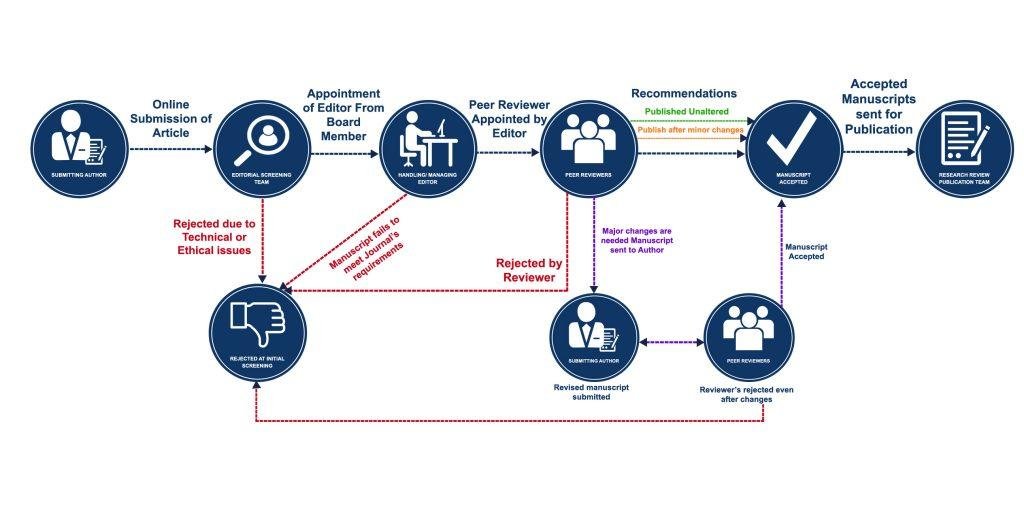Review Process

The method used to determine the content of a manuscript before it is published online is the peer review process. Independent professionals/ experts/ researchers in the related research sector are expected to evaluate the uniqueness, validity and relevance of the submitted manuscripts to assist editors in deciding whether a manuscript should be published in their journal.
This process of peer review helps validate the research work, create a method by which it can be assessed and expand the possibilities of networking within research communities. Despite criticism, peer review is still the most generally accepted means of validating science.
Only papers submitted with bibliographic reasoning that follow good scientific criteria, explanations, records and proof of their work (e.g. understanding and building on other work in the field, relying on rational reasoning and well-designed experiments, supporting statements with evidence, etc.) are approved for publication in the Journal.
We Follow Double-Blind Peer Review Process
We usually follow the method of double-blind peer review, in which both the authors and the editors who will review the submitted papers and authorize them for publication are unaware of the identity of each other.
The editor of the journal assigns the papers obtained from the researchers to the reviewers in this process, in which the reviewers are initially expected to check the scope of the manuscript, whether it suits the journal or not, to provide their comments or any suggestions/edits in the paper (if necessary) to accept the manuscript for publication in the journal.
This constitutes the basis for determining if the work should be approved, revised as acceptable, or rejected. Submissions with significant shortcomings would be rejected, but after they have been thoroughly revised, they can be re-submitted.
This does not necessarily mean it is of low quality if a job is refused. A paper can also be rejected because it does not fall within the specialisation field of the journal or because it does not meet the high expectations of innovation and originality that the journal in question demands.
If the reviewer recommends only minor edits, the journal will publish the article, but the author is asked to make certain corrections before that.
